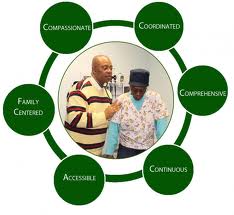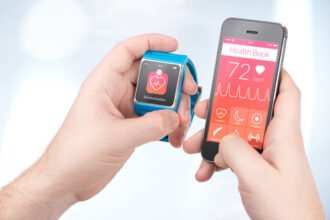EXCLUSIVE POST – There is no lack of health and medical apps for multiple mobile health (mHealth) platforms. The Apple app store now over 9000 medical apps. While there are no count of Android apps in health and fitness and medical, it is definitely in the hundreds if not thousands. Yet the most of these are stand alone and have no integration with PHRs or EMRs.
EXCLUSIVE POST – There is no lack of health and medical apps for multiple mobile health (mHealth) platforms. The Apple app store now over 9000 medical apps. While there are no count of Android apps in health and fitness and medical, it is definitely in the hundreds if not thousands. Yet the most of these are stand alone and have no integration with PHRs or EMRs. Generally mobile apps are stand alone except for those which are mashups utilizing Google Maps or other existing data sources. This is true of health apps as well which may integrate with Google Maps for tracking one’s running course or utilize ClinicalTrials.gov for finding research studies like the recent winner of the Office of the National Coordinator for Health Information Technology challenge on Cancer Prevention and Control.
Integration of mobile apps with EMRs and PHRs pose several barriers. First, most EMRs are proprietary and not easily open to connections with other platforms. Many are working with older technologies and have been slow to embrace mobile devices. At the same time, according to Fred Pennic, “Most mHealth companies (and products and services) are tackling thin vertical healthcare opportunity slices instead of being part of an integrated, horizontal package of care and value delivery.” So we have the EMR vendors appealing to providers and Mobile app developers appealing to consumers. How can the two meet?
PHRs could provide a middle ground. For instance, Microsoft HealthVault from its inception has integrated with a broad variety of tools and devices including AllScripts ePrescribe, Eclipsys Sunrise Patient Portal and several health plans. HealthVault’s well documented approach for solution providers and helpful technical documentation has lead to their success in this area. Google Health used the Continuity of Care Record (CCR) standard to allow provider organizations pass data from PHRs to Google Health. However, not all mobile app developers will use a single PHR or single platform for storing data.
The solution is to develop a set of standards for mobile apps which are platform independent and allow for data exchange. Whenever one discusses health IT standards, the source to go to is The Healthcare Standards blog by Motorcycle Guy, Keith Boone. His insightful post from September notes the constraints on mobile apps but also potential standards solutions including XML, XDS Metadata and JSON. One group which is looking even more broadly is West Wireless Health Institute and their Infrastructure Independence Initiative. Their goal is find wireless solutions to specific disease areas. This is the closest model to integrating health apps into clinical workflow. Another group working in this area is the Centre for Global eHealth Innovation, particularly, their Medical Device Informatics Group which is looking at low cost home monitoring through smart phones which feeds data back into the clinician’s workflow using carefully developed algorithms to alert providers. But should government play a role in mobile health applications? Already the FDA has stepped in with guidance related to which types of applications are appropriate for regulation. But the Office of the National Coordinator for Health IT is still focused on certifying EMRs. Standards related to Health Information Exchange (HIE) may be appropriately applied to mobile apps in the future but may need to wait until HIE are more broadly deployed. Perhaps professional organizations like the Health Information and Management Systems Society (HIMSS) and the American Medical Informatics Association (AMIA) can provide guidance on standards development. HIMSS recently launched a mobile health website rich with resources and will focus on this topic at their conference in February.
So there groups are leading the way to providing integration tools for mobile health into the clinical workflow and beginning to answer the questions of when this is appropriate. But standards are lacking. Obviously, the standards should be open rather than proprietary. While proprietary EMRs and PHRs will develop APIs to enable mobile apps simply due to market pressures, the ability to consolidate one’s data from a variety of mobile apps will require open standards for mHealth. Also, there will need to be decisions made on how much data is appropriate to integrate into the clinical workflow. For instance, while those in the Quantified Self movement monitor their life and health on a granular level, the physician or nurse practitioner will not be able to digest large quantities of information. So standards will be needed to determine how to summarize these patient reported outcomes in ways that are meaningful to the clinician. Maybe what is needed is open algorithms which can assist with translating mobile health data into meaningful clinical data. Fortunately, all the pieces are in place for this kind of interoperability but it will require the will to create open standards throughout both the EMR and mobile app industries.







